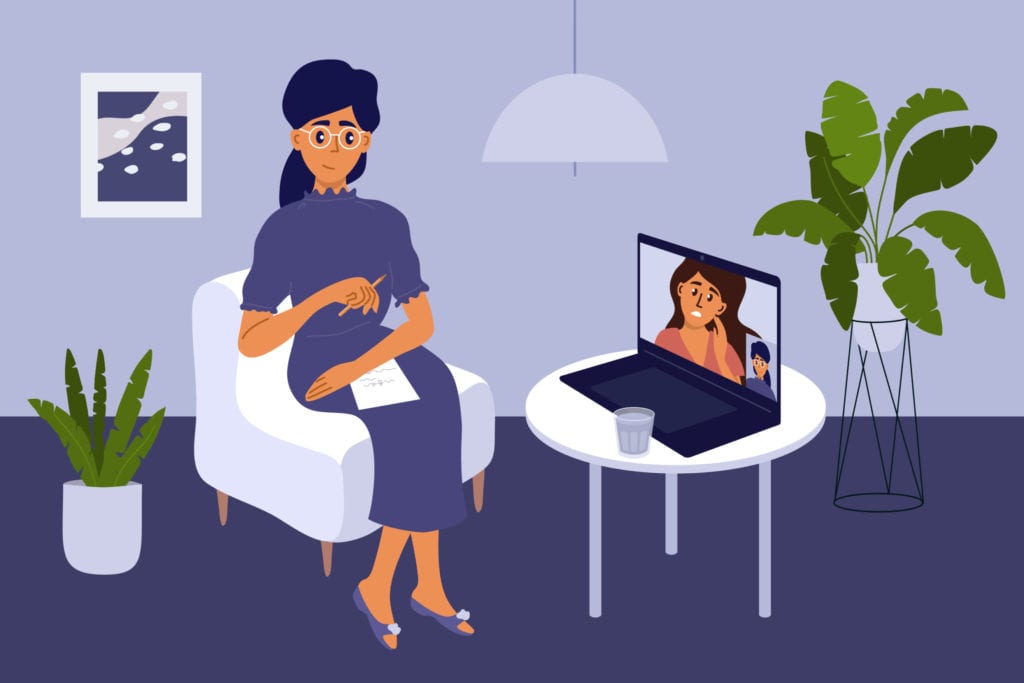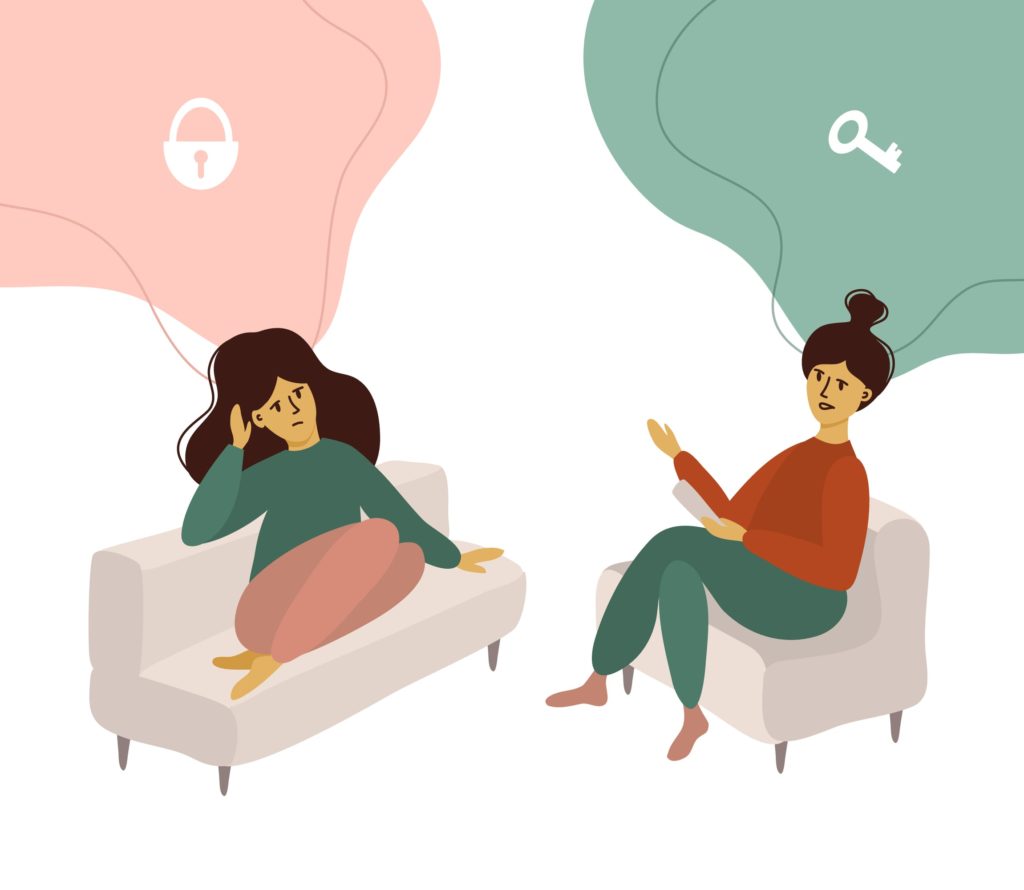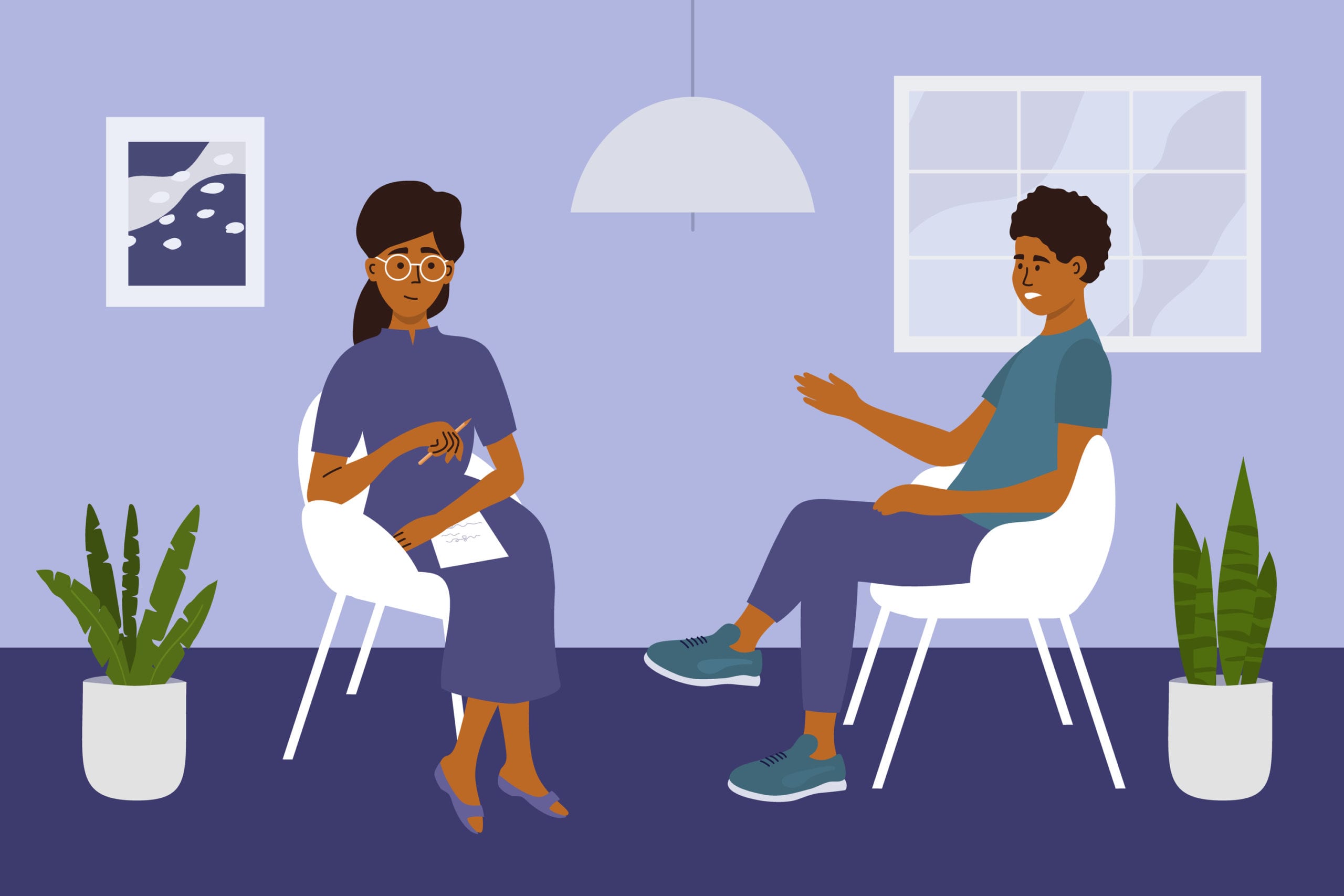So, you decided to see a therapist. First of all, give yourself props for prioritizing your mental health. This year’s World Mental Illness Week (Oct. 4 – Oct. 10), which leads into World Mental Health Day (Oct. 10), comes at a time where all of us have had our lives impacted by the global pandemic. With all of the challenges we’re experiencing in our day to day, now’s a better time than ever to overcome stigmas that prevent many people from seeking help. For starters, though people with mental illnesses benefit from therapy, you certainly don’t need to have one to better your well-being.
Regardless of the reason for seeking treatment or how your journey’s landed you here, you’ve accomplished the most difficult part of recognizing that you need some more support. Now what? If you’re feeling nervous about what will happen in your first session, here’s your beginner’s guide.
Your first appointment is different from a consult
Most therapists will offer an informal, 15-30 minute initial phone consultation to not only make sure that they’ll be able to help you with your unique situation, but you can see if you click with them as well. “The therapist will assess that what you are looking for is appropriate for their work and vice versa. And you can get a sense if this person seems like someone you feel comfortable talking to,” says Sage Grazer, co-founder of Frame Therapy, an LA-based therapy matching service. Don’t expect any therapy work to happen during this first consult — it’s more about giving you an opportunity to ask questions. Most of the time this is free, but you should double-check with them before you start.

You might like virtual therapy over in-person (or vice-versa)
“COVID-19 has both helped and hurt patients seeking therapy. Virtual therapy has increased accessibility for those who might not have been able to afford it or fit it into their busy schedule. With the pandemic impacting the safety of clients and therapists most therapists were forced to transition into virtual therapy which increased access to fantastic professionals who were previously only available for in-office sessions,” says Kelli Rugless, Psy.D., Licensed Clinical Psychologist and founder of Flourish Psychology Co. On the other hand, “virtual therapy also has patients struggling with a lack of privacy. A lot of my clients are in closets, bathrooms, basements, outdoors, or in their cars to ensure their privacy. And the other drawback is that technology glitches can interrupt the therapeutic flow,” she says. It’ll be worth seeing which options your therapist is offering.
You’ll likely have a range of feelings
It’s normal to feel nervous. To get the most out of your first session, you’ll likely feel emotionally drained, relieved and everything in between. “You might even feel worse before you feel better,” says Rugless. “Most providers use that first session to gather background information which means you will be asked to talk about a variety of topics that might be challenging; challenging because you’ve never shared this information before, challenging because you’ve avoided thinking about certain things, or challenging because you’ve never thought about an event in a particular way before,” says Rugless. “It’s like cleaning out a garage full of storage boxes: It needs to get messier as you open each box, but once you sort through what you need to keep or throw away, your garage is far neater when you’ve completed the task.

Check-in with your gut
Check-in with yourself during your first session: Are you comfortable and do you think you could trust this person? Do you feel like you’re staring at the clock waiting for the session to end? Do you think they can relate to your story or understand where you’re coming from? While your stress and anxiety likely won’t completely melt away with that first visit, you should still have a good feeling about your future relationship with them.
Not clicking with them? Give it a few more tries
“Therapy is the process of a professional attempting to join you on your journey and assist you by pointing out patterns, beliefs, and processes that might be making it difficult for you to reach your goals. That being said, this process of identifying these roadblocks can be really uncomfortable,” says Rugless. But it’s important not to confuse the discomfort that is essential for therapy to be productive with a bad fit with your provider. “A bad fit is characterized by not feeling understood, having a difficult time being vulnerable or fully honest with your provider, or not making any significant progress,” she says. Rugless recommends giving a therapist three to five sessions before calling it quits. That should give you enough time to get over the initial jitters and give you a sense of whether or not this person is the partner for your journey.
Don’t be discouraged if you don’t end up liking your therapist
Even with an intro consultation, “you might end up talking to two or three therapists before you make your decision on who to stick with. You need to get a sense of their approach, their communication style and their personality because it’s all ultimately about who you feel most comfortable talking to,” says Grazer. “The best therapist in the world might not be the best therapist in the world for every single person,” she says. It’s easy to let this dissuade you from continuing on with your mental health care, but understand it’s a natural part of the process.

You’ll get asked a lot of questions
Get ready to really open up. “Most therapists are going to ask about your goals, your values, your history (occupation, family history, friends, medical issues, spiritual beliefs). They’re also going to ask about sensitive topics like abuse (physical, sexual, emotional), suicidal thoughts, family history of psychological history, substance use/abuse,” says Rugless. It’s also okay if you hold some things back. “The more you share, however, the better your provider is able to come up with an effective plan for you,” she says. Your answers will be kept confidential because of HIPAA (the Health Insurance Portability and Accountability Act) — for the most part. Just like any doctor, you will sign an agreement that will outline the details of what’s kept confidential. It’s your therapist’s legal and ethical responsibility to report something that puts your well-being (or someone else’s’ well-being) at risk.
You can take the wheel
You can ask your therapist to guide the session, or you can feel empowered to go in and ask for what you think you need. “People respond differently to different techniques. Some people want direction. Others want to be given ‘homework.’ Some just want to be able to have space where they can just openly free associate, but not necessarily wanting someone to problem-solve,” says Grazer. If you have an idea of how you want the session to go, speak up at the get-go.
Don’t plan to be social afterward
Some practical advice: “Don’t schedule anything that involves socializing with others directly after your first visit. You might feel really drained or intensely emotional and it’s best to be able to have some time to yourself to process your thoughts and feelings,” says Rugless.
With additional reporting by Iman Balagam
If you are dealing with depression and needs help, you can call the NAMI Helpline at 800-950-NAMI.







